Crawfish 101: Everything You Need to Know + Our Favorite Crawfish Recipes
Discover why so many people love CRAWFISH! From what they are and where to find them to how to cook them, this comprehensive guide covers everything you need to know about these tasty crustaceans.
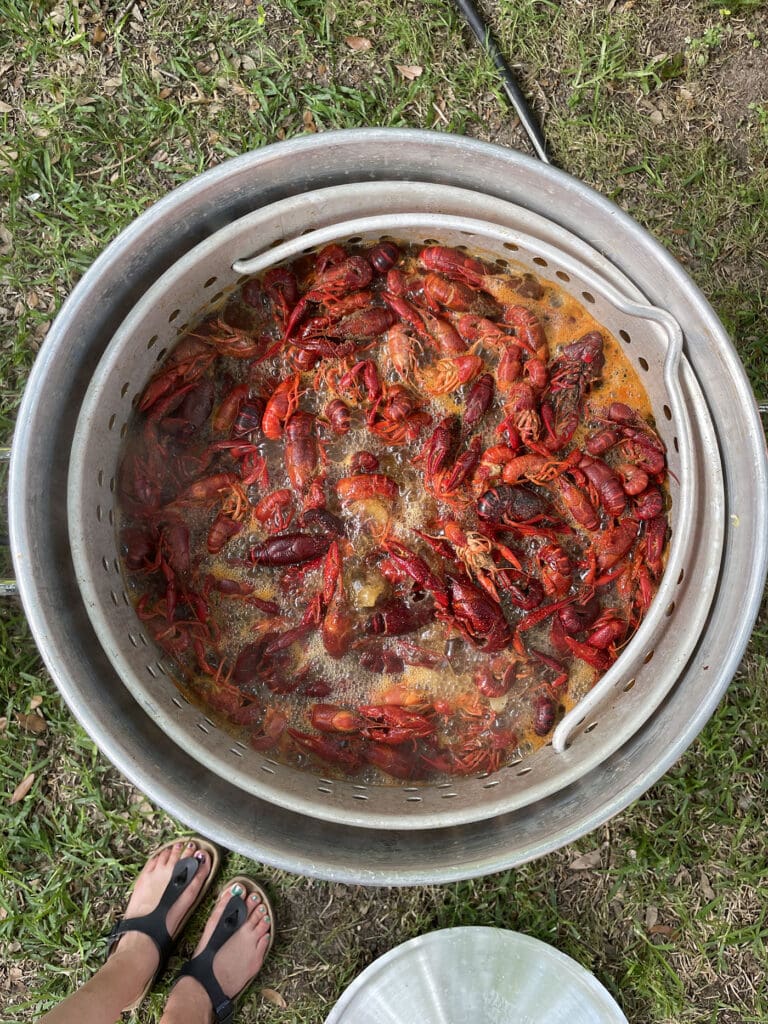
If you’re like me and were not raised in South Louisiana, you might be scratching your head.
CRAWFISH?
What are those?
I’m here to introduce you to one of my favorite proteins, share some tips and tricks about ‘em, answer your questions and then share some of my favorite crawfish recipes.
Sound good?
What are crawfish?
Crawfish are freshwater crustaceans. They can be found in ponds, lakes, bayous and streams.
Sometimes known as crayfish, crawdads, crawdaddies or mudbugs, they can be wild caught or farmed in fresh water and are one of the delicacies of the South. (Fun fact: One of my husband’s roommates once had crawfish traps in a local bayou and we had a boil one evening with the crawfish that he caught.)
Louisiana is the largest producer of crawfish in the United States. According to Texas A&M AgriLife Extension, crawfish are also farmed in Texas, Arkansas, Mississippi, Alabama, South Carolina and North Carolina.
Some rice farmers will raise crawfish in their rice paddies. (Learn more about this from an old article on Mississippi State Extension.)
I went to college in South Louisiana at LSU, and I did a photo story on crawfish farmers and got to experience their work firsthand in the rice paddies.
What parts of the crawfish do you eat?
Crawfish are similar to lobsters. They have a hard exterior shell, called an exoskeleton. This is not edible. (However, you can use it to make an awesome stock!)
To get to the crawfish meat, you must remove the exoskeleton, peeling it apart to get to the meat in the tail.
Crawfish meat is also found in the claws, though it is sometimes nearly impossible to get, depending on how large the claws are.
What do crawfish taste like?
To me, the flavor of crawfish is similar to that of lobster. The meat is slightly sweet and a little salty. It is very lean. The texture is light and a little chewy, while the claw meat is more tender.
The tails are bite-sized, so they are not as filling or plump as any lobster.
Crawfish tails are not particularly fishy, like some shrimp are.
Crawfish are a mainstay in several cuisines and are a celebrated ingredient in Cajun and Creole cuisine. Since Louisiana produces the majority of our nation’s crawfish, it’s no surprise that the people who live near the production areas around the Gulf Coast know how to cook ‘em!
In the Cajun and Creole cuisines, you will oftentimes find crawfish paired with ingredients like onion, bell pepper, celery, garlic and more vegetables.
If you attend a crawfish boil, you’ll see the crawfish are boiled with Cajun seasonings and herbs, as well as potatoes, corn, mushrooms, green onions, etc.
The host might offer clarified butter to dip the tails in, or a Cajun dipping sauce (which we like to use for our Baked Boudin Balls and a Boudin Board) or extra seasoning or even cayenne pepper for some kick.
When is crawfish season?
Crawfish season is the season in which crawfish are harvested from the waterways.
It typically runs from February into May or June. This is the only time of year you will be able to purchase fresh crawfish for boiling.
The crawfish available in February (which is the start of crawfish season) are typically smaller. They tend to get larger the later in the season that you consume them.

Crawfish tails vs. whole crawfish
If you don’t live in the Southeast, you might not be able to get your hands on live crawfish, which obviously come whole.
The only reason to purchase whole, live crawfish is if you’re hosting a crawfish boil. And I’ll be honest with you — we have never hosted one because it is a do and requires some specialty equipment.
If you’re curious about hosting a crawfish boil and the tools you’ll need to do that (including an extremely large pot), check out this guide from Texas Monthly.
If you don’t want to host a crawfish boil… that’s fine! You can purchase crawfish tails to use in other recipes below!
Where to purchase crawfish tails:
You can find crawfish tails at some groceries in their frozen seafood section. This will be dependent on your grocery store, as well as where you love.
I had luck finding these babies in our Whole Foods and Central Market in Dallas, but have not found Louisiana crawfish tails in Austin yet.
Packages of crawfish tails that have been frozen are awesome for recipes because they’ve already been peeled and come with some liquid fat in the packaging.

How to peel crawfish
Unlike shrimp, you do not peel crawfish until they are boiled or steamed.
Their outer shell (or exoskeleton) is more tough to remove than a shrimp’s, but you will not need specialty equipment… just your hands.
How to remove the crawfish tail:
Hold the front (where the heat and claws are) and the tail of the cooked crawfish between your hands.
With the hand that is holding the tail, push it toward the rest of the body gently. Pull it apart from the body. This should remove the tail from the rest of the body.
How to remove the meat from the tail:
From here, you will remove the rest of the shell from the tail. I like to use both of my hands, focusing on peeling back the rings of shell with my thumbs and pointer fingers.
My husband, who is from South Louisiana, can do this in one swoop and likes to pull the tail meat from the shell with his teeth when he can get a grip on it. (This is great if you’re feeding yourself. If you’re peeling crawfish for someone else, a little less than ideal.)
There is fat in the head of the crawfish, so you can use one of your fingers to dig it out of the front end of the crawfish. It is yellow, and if you’re eating well-seasoned crawfish, it will have an awesome kick to it. Some people suck the heads, which will pull out these flavors, too.
You can discard the shells (which are their exoskeletons) of the crawfish into the trash OR save them to make a crawfish stock, but make sure they don’t have big claws! If you have larger claws, you should try to remove the meat.
How to remove claw meat from crawfish:
To remove the claws, grab the movable part of the claw and move it back and forth until you can gently wiggle it out from the claw itself. The part that you pulled off should have meat on it.
From here, you can crush the claw between your palms (or use a crab cracker tool) to get the rest of the meat, if desired, or simply move on.
I only try to remove the claw meat of larger crawfish because the smaller ones do not have a lot of meat and this is a lot of work, relatively speaking.
How to eat crawfish:
Once you’ve peeled the crawfish tails and claws, you can dunk them in a special dip, enjoy them as is or add them to a recipe. We’ve got some ideas for you below.
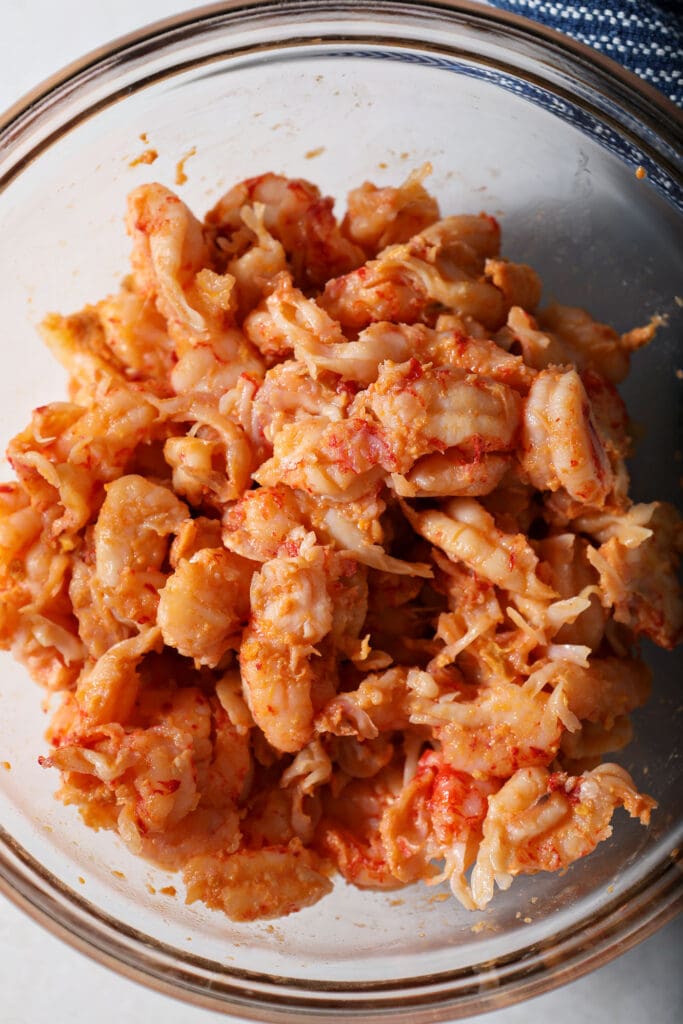
Erin’s Easy Entertaining Tips
Since we live in Texas now, we love sharing Louisiana flavors with the people we spend time with. This includes making a variety of different crawfish dishes.
If you want to share crawfish with the people you love and don’t want to host a crawfish boil, here are some things to consider:
- Defrost your crawfish tails early. I do this in the fridge. They can hang out there for 4-5 days once defrosted.
- Make sure you’ve got enough tails! These tend to go quickly for us, so make sure you’ve got enough.
- Double or triple the recipe. This depends on what you’re making, of course, but doing this is never a bad call, especially if you know your people love crawfish flavors.

Frequently Asked Questions
We’ve had good luck in the frozen section of our local grocery stores here in Texas. You can also order them online from a trusted retailer, like Cajun Grocer.
Yes. This is fat, and it has awesome flavor. Don’t skip it!
Yes, they are! These are the type of crawfish we typically have here since we cannot easily get live crawfish or fresh crawfish tails.
Do not eat the exoskeleton or the shell of the crawfish. That is not edible.
The most common variety of crawfish are a red color, but some are a more brown color. The exoskeleton of the crawfish will turn a bright red when boiled or steamed.
To my knowledge, no. I think it would be extremely hard to peel a crawfish that had no already been boiled or cooked.
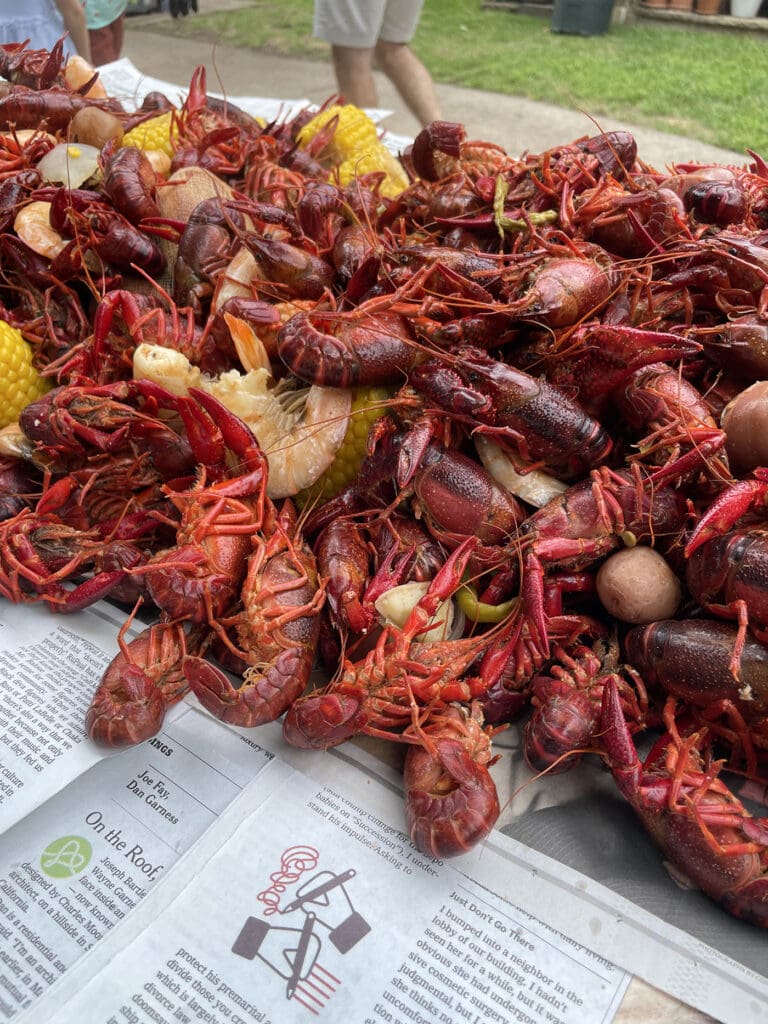
Quick tips and tricks for enjoying crawfish
- If you’re peeling crawfish, make sure you have tools to clean your hands afterward. My mother-in-law recommends using Vaseline beneath your fingernails before peeling crawfish so the spices don’t get caught under your nails, especially if you wear contacts. Baby wipes are important to have around, as are paper towels and a lot of hand soap.
- Make sure your crawfish tails are defrosted. Using frozen crawfish tails in recipes typically doesn’t work out. Make sure to defrost yours in the fridge.
- How to store: Leftover crawfish tails can be kept in an airtight container in the fridge for 3-4 days.
Our favorite crawfish recipes:
Crawfish Etouffee
Crawfish Etouffee is a comforting and classic Louisiana dish that highlights peeled crawfish tails and the Cajun trinity. This saucy stew, served over rice, is packed full of flavor and perfect for a crowd.
Crawfish Pie
Want to serve the most decadent, meaty Crawfish Pie recipe at home? This savory pie recipe is out-of-this-world delicious and chock full of Louisiana crawfish tails. Paired with the trinity, various spices and a homemade lattice pie crust, you won’t find a prettier or more delicious Crawfish Pie.
Hot Crawfish Dip
Looking for a unique dip to serve to a crowd? This Hot Crawfish Dip is hearty, gooey and slightly spicy! Studded with bite-sized crawfish tails, this creamy dip is satisfying and great for sharing for any occasion.
More crawfish recipes to try:

About the Author:
Erin Parker is a Southern gal living in Texas with her husband and two daughters. She started The Speckled Palate to share what she was cooking as a newlywed… and over the years, it’s evolved to capture her love for hosting. Specifically, the EASIEST, lowest key entertaining because everyone deserves to see their people and connect over good food. Learn more about her…

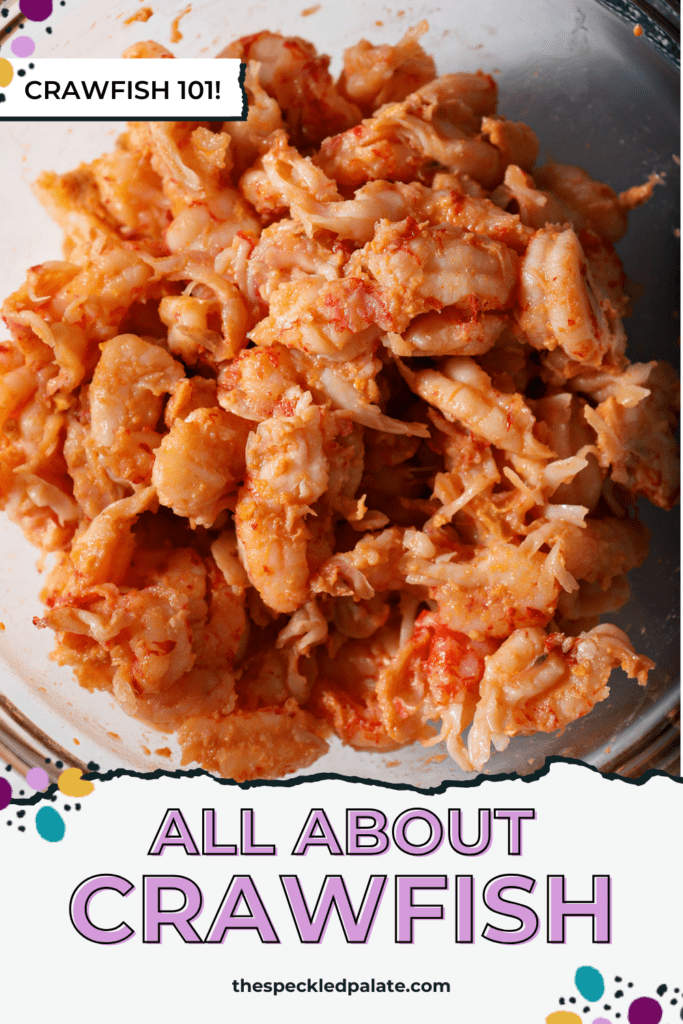



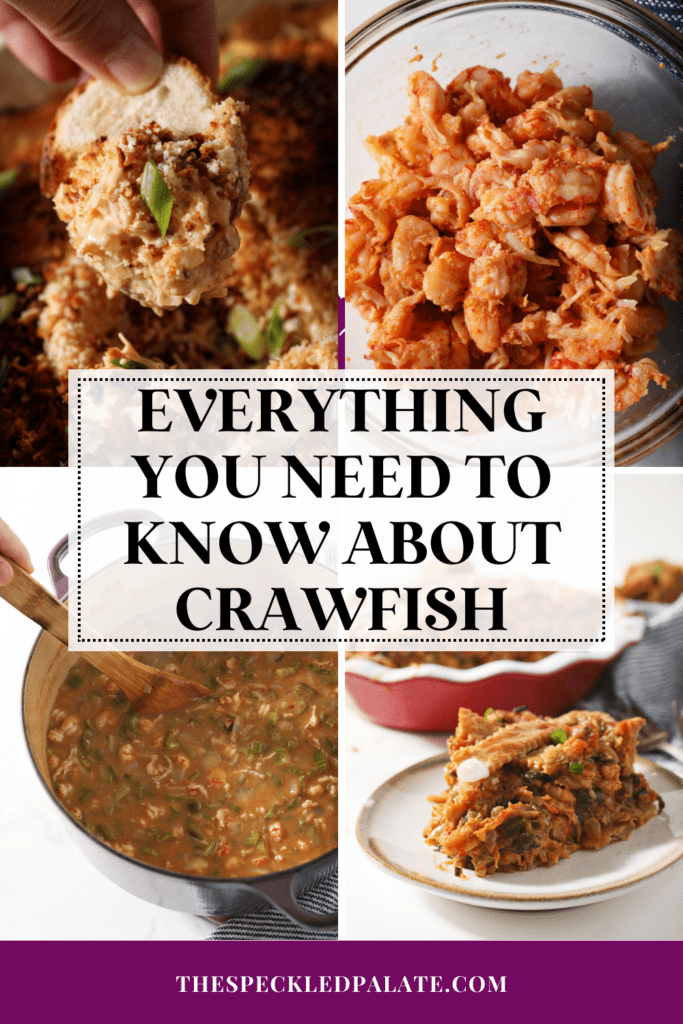

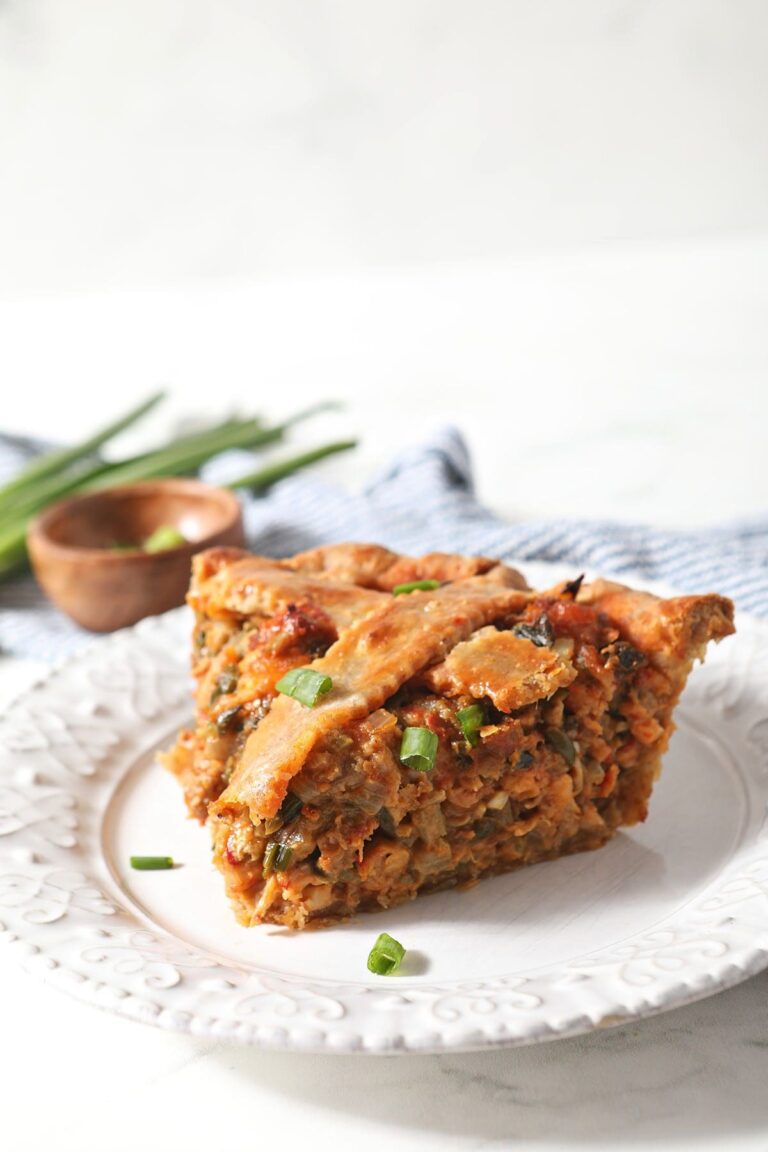






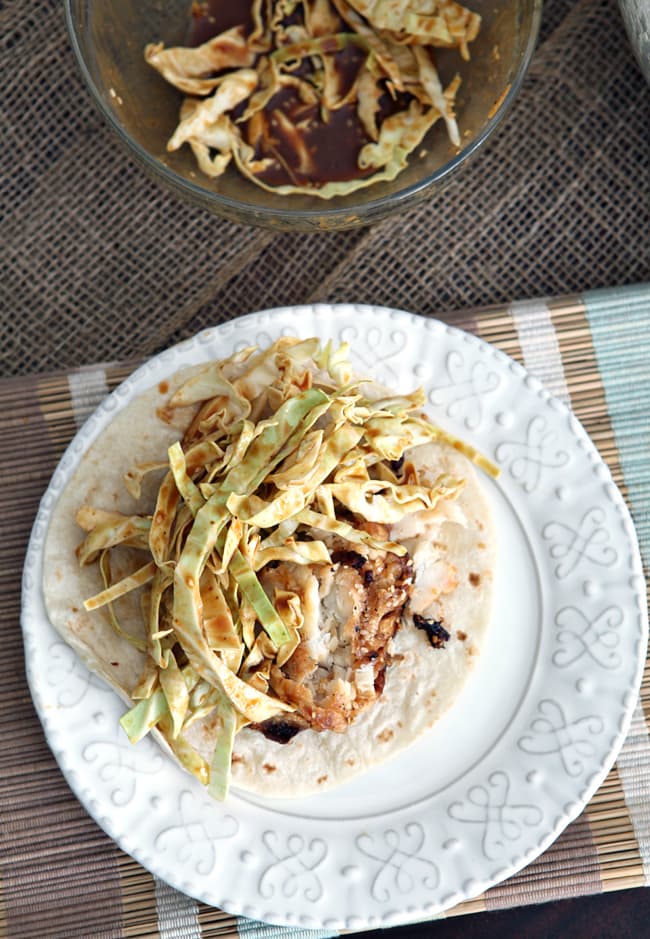
Before leaving a comment or rating, ask yourself: